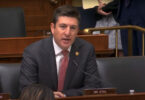It has been widely reported that a common BRICS currency will be discussed at a symposium next month. However, the Governor of the Bank of Russia, Elvira Nabiullina, stated that launching a common currency could be challenging.
There have been claims that the output of the economies of Brazil, Russia, India, China and South Africa (BRICS) are now bigger than the combined G7 economies. The assertion adds weight to the potential impact of a new currency.
Our own research found that it depends on the source of the data. Using World Bank GDP statistics for 2022, we found the G7 combined GDP is 69% larger than BRICS. In fact the BRICS GDP is only marginally more than the economy of the United States.
But that latter statistic is relevant as the United States’ dollar is the dominant world currency. However, the size of the economy is only one factor contributing to the dollar’s dominance.
Russia’s views on BRICS currency
According to state owned news agency RIA, the Governor of the Bank of Russia spoke about a potential BRICS currency at a recent press conference. “Of course, this idea deserves attention, but I think this project will be quite difficult to implement, like any idea of a supranational currency. It requires the consent of many parties,” said Nabiullina.
She has a point. August’s BRICS summit has highlighted the challenges. Vladimir Putin wants to attend the summit in South Africa, but the International Criminal Court issued an arrest warrant for him. China is not a court member, but the other four countries could not agree to move the event there.
Nabiullina continued, “This is not a simple project at all. Therefore, we are still working and concentrating our efforts on the development of bilateral settlements using the national currency, the development of the infrastructure that connects our payment systems, what businesses need today, now.”
Coordination could become more complex if the group expands beyond the five. The BRICS nations created the New Development Bank in 2015. Six years later, it admitted Bangladesh and the United Arab Emirates, with Egypt becoming a member earlier this year. Uruguay is a prospective member.
Others have pointed to the need to develop technology for the currency. China has extensive experience gleaned from its domestic digital yuan CBDC and as the technology driver behind the MBridge CBDC for cross border payments that includes Hong Kong, Thailand and the UAE.
Bank of Russia maintains its focus
Nabiullina’s views don’t necessarily reflect that of Russian politicians. However, despite significant lobbying around legalizing cryptocurrencies and other efforts to address sanctions, Nabiullina appears to have maintained a consistent position.
Recent reports of one of Russia’s major banks running trials for trade payments with crypto appear to avoid infringing rules by purchasing crypto outside Russia.
Russia has special legislation for tokenized real world assets, so-called digital financial assets, such as tokenized precious metals. Originally these could not be used for payments, but Russia recently updated the laws to enable them to be deployed for cross border settlement.
A digital ruble
On the topic of legislation, the Russian Duma recently passed legislation for a digital ruble central bank digital currency (CBDC). It still has to be approved by the upper house, the Federal Council, but that is expected this week. If approved, the legislation comes into force on August 1. This has held up the launch of a digital ruble pilot, which will include 13 banks.
The currency does not earn interest and payments are free for end users. Merchants pay 0.3% for transactions.






